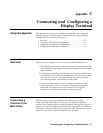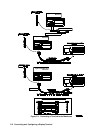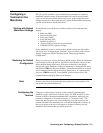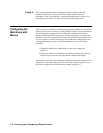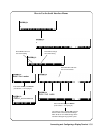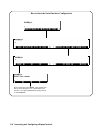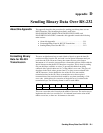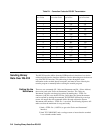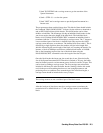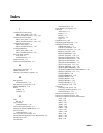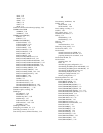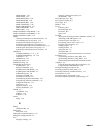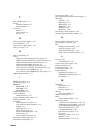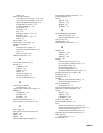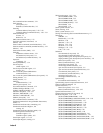
3. Send "SI SYSTEM" and a carriage return to get the attention of the
System Instrument.
4. Send < CTRL-C> to clear the system.
5. Send "*RST" and a carriage return to put the System Instrument in a
known state.
The program must then send the binary data. This block of data should include
the command "DIAG:DOWN:CHEC" followed by the address to download to
and an IEEE 488.2 arbitrary block header. This block header can be either
definite or indefinite. The advantage of using an indefinite block header is that
you do not need to know the length of the data block. The indefinite block
header is # 0. With the DIAG:DOWN:CHEC command an indefinite block is
terminated with the "!" character followed by a carriage return. The "!" character
is not considered part of the block. A definite block only requires the ASCII
carriage return character as terminator. The definite block starts with # . This is
followed by a single digit that shows the number of digits in the length field,
which is followed by the actual length of the block, not counting the header. For
instance, a block of 1000 bytes would have a definite block header of # 41000.
Due to the formatting required, the size of the block when using the
DIAG:DOWN:CHEC command is twice the length of the data in bytes.
Once the block header has been sent, the actual data is sent. Since the buffer
size of the System Instrument RS-232 Interface is limited to 79 bytes, the buffer
must be flushed (passed to an instrument parser) before it reaches 79 bytes. This
can be done by sending a carriage return. The first carriage return should be
included in the binary file after the buffer header. Sending it before this would
result in the parser determining that there are not enough parameters and
producing an error condition. Once transmission of the actual data begins, a
carriage return should be included after every 78 bytes.
NOTE The carriage returns are not considered part of the block count.
After the last byte of data, there must be a carriage return to terminate the
transmission for a definite block or a "!" and carriage return for an indefinite
block.
Sending Binary Data Over RS-232 D-3



